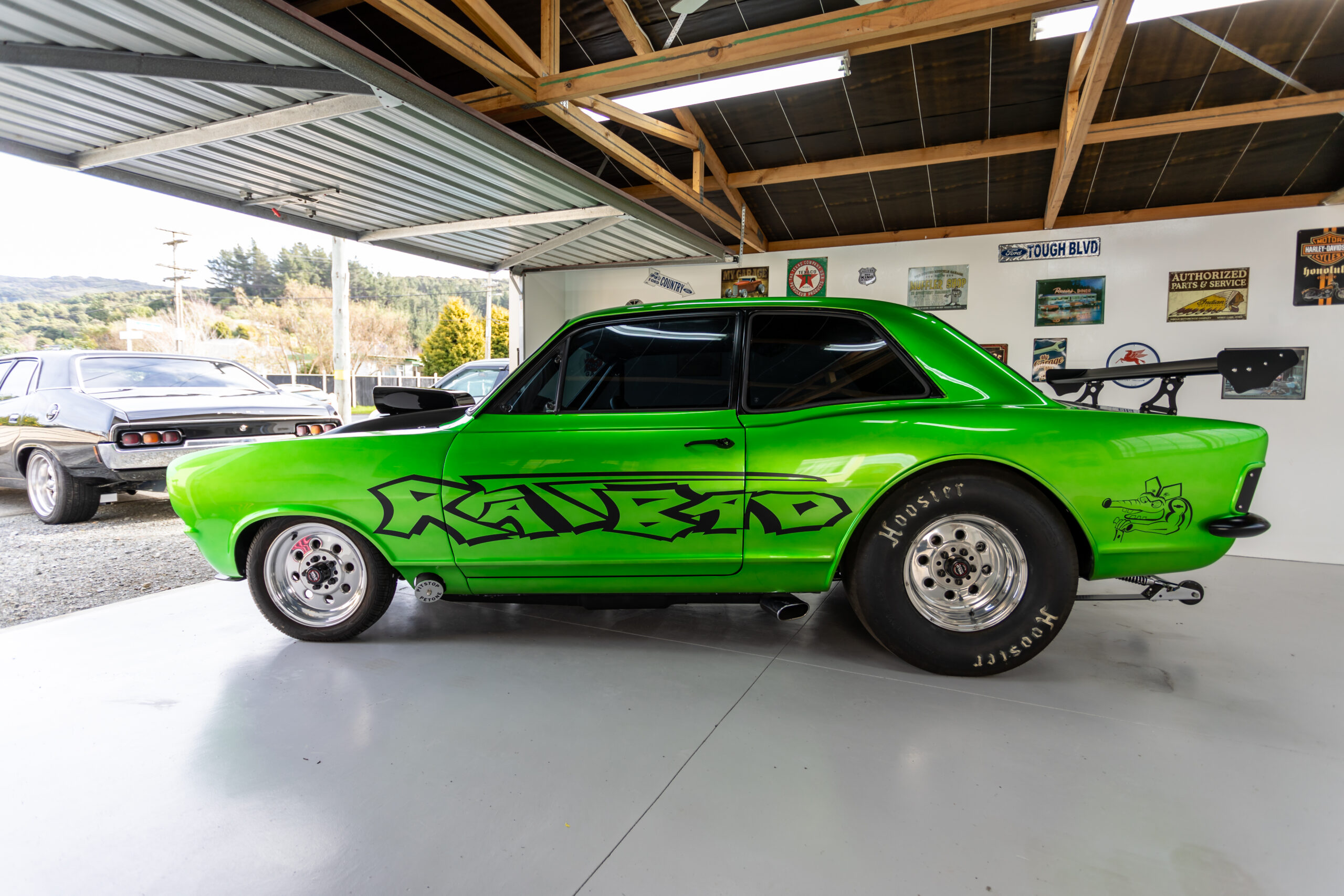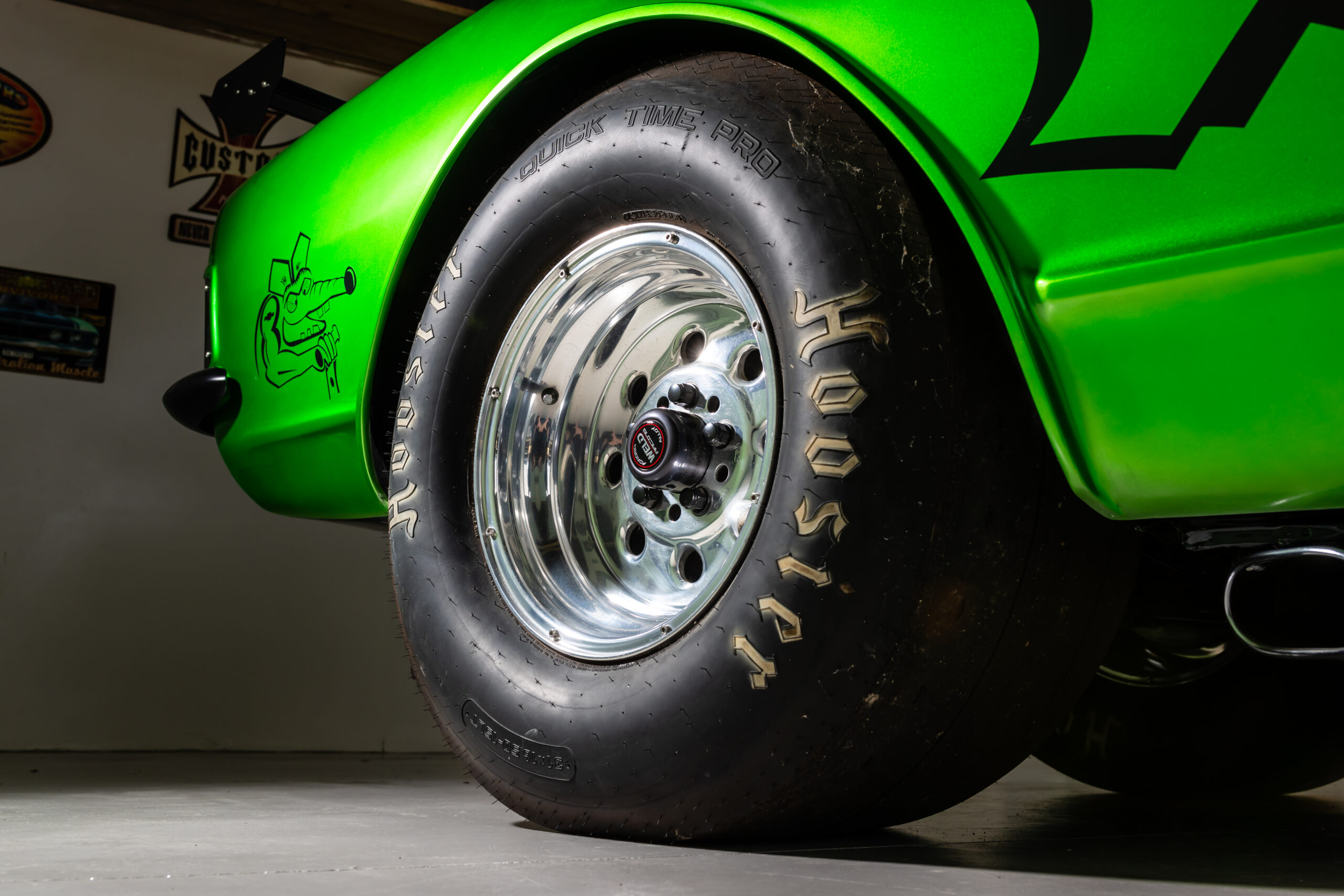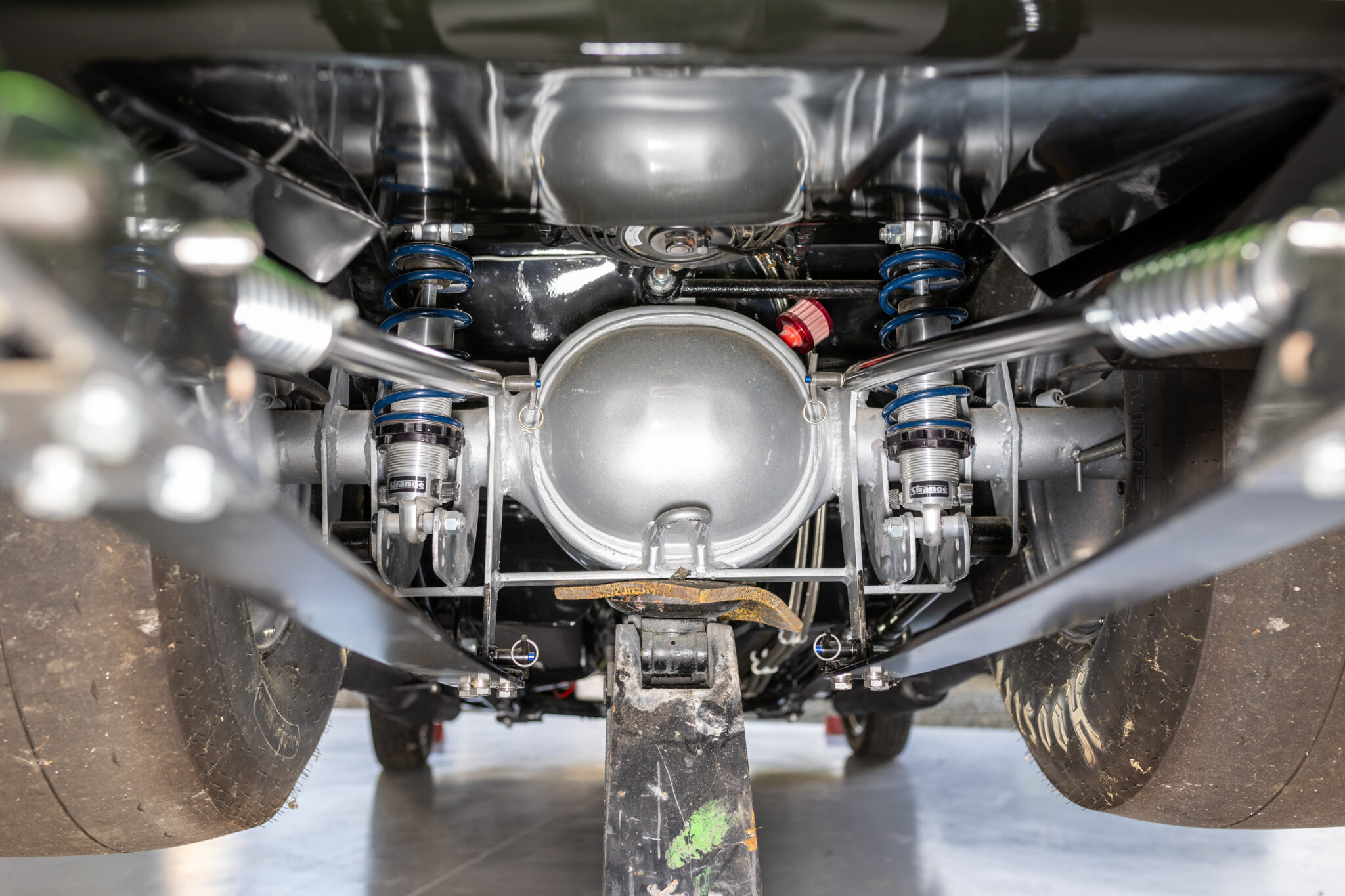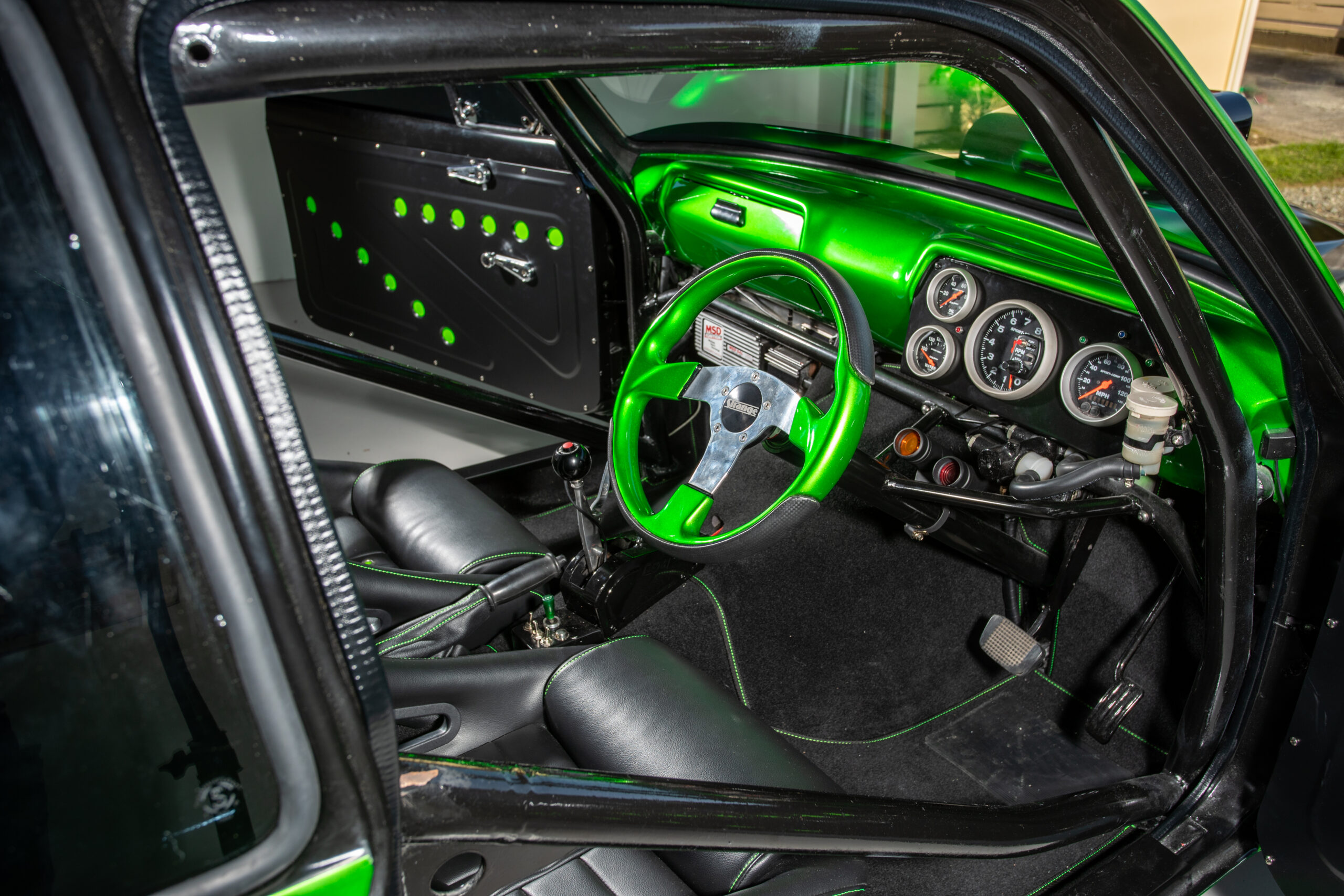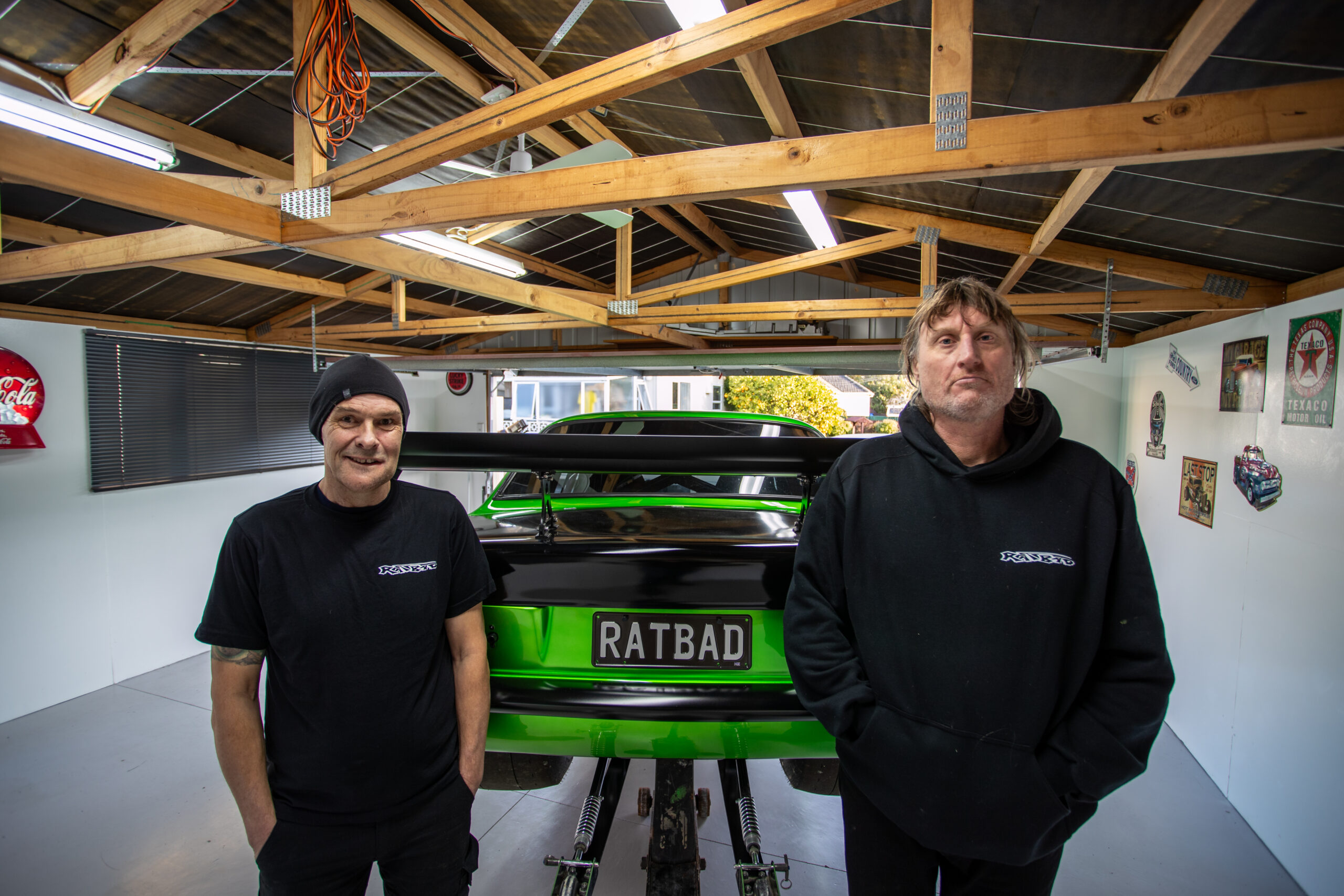Words: Turnkey Industries Photos: Danny Wood
Depending on your age, and more so how involved you’ve been in the New Zealand street and strip scene, there’s a very good chance you’ll have heard of River Rat. That name in the context of NZV8 magazine doesn’t refer to some type of water-loving rodent, but more so a street and strip Viva. Potentially the most well-known thing to come out of Whanganui in the 1980s, the car was the product of Tony Johnson, Grant Rivers, youthful enthusiasm, and hard work. Between 1984 and 1989 it evolved from a 4-banger to naturally aspirated 307 power, to blown 307, to a 396ci big block. Running a best of 11.0 at 120mph, it was believed to be the fastest steel bodied street legal sedan at the time.
When Lower Hutt’s Pete Richardson got his hands on the River Rat in 2017 it was a bit worse for wear. Over the years it had changed hands multiple times, with each successive owner trying to make it their own, or improve it before moving it on again unfinished. Pete, like many of us, knew of the car’s prominence, and having owned and built plenty of cars over the years he wasn’t afraid of a little hard work. As often happens in these situations though, that little bit of hard work soon blew out to be a lot of hard work, but thankfully he had some great mates on hand to help with the three-year process. Much like that original build between TJ and Grant, the whole build would be taken care of by the lads themselves with the only part the car left the shed for being the interior retrim.
The other similarity is that the car was originally built to push the boundaries, and today’s incarnation does much the same. Sure, Pete could have paid homage to the car by putting it back to how it was in its heyday, but instead he chose to continue its legacy by making it his own.
A key component of making it his own was the body work, but to be fair that wasn’t entirely by choice either. The body had suffered plenty of knocks over the years, so it needed its fair share of repairs to begin with, but the lads soon got carried away making sure the panel fitment was better than when the car left the factory in 1969. This involved reshaping the front guards along with the nose cone and continuing the new lines into the tops of the doors. The rear guards also went under the knife to be re-contoured to the build team’s liking. Pete’s quick to give credit for the body work to great mate Mike McQueen, aka Fish, who was on hand throughout the build. It was Fish who also laid down the DNA Custom Paints candy green paintwork and deep gloss black that now adorn all the panels. A closer inspection reveals the boot lid is now a fibreglass version of its former self and a subtle custom splitter has been created below the front end.
While the car ran a small block Chev in its heyday, sadly the original engine was long gone. Pete didn’t need to look too far for a replacement though, as fellow Hutt Valley local Eddie Trybula had just the perfect starting point. Wanting to get his ‘Running on Empty’ ’57 Chev to run quicker times, the L88-based naturally aspirated engine combo in it was up for grabs, and Pete was sure to jump on it and have Ian Barnet rebuild it for him. The block is a genuine 1966-69 factory high performance block, although the internals are replaced with much more modern items such as forged rods and 11.5:1 compression aluminium pistons. Likewise the stock camshaft that helped the factory engine create 430hp is long gone, replaced with a custom specced Comp Cams item with way more lift and duration. A key component of the L88s in their stock form were the aluminium heads, and those too remain on the block today, although what sits above them is far from factory.
The key component of the new intake system is a Team G intake manifold that has been topped with a 1050cfm Holley carb. Feeding fuel to the thirsty combination is the job of a Magnaflow fuel pump that works in conjunction with a regulator from the same brand and plenty of Aeroflow lines and fittings. The bug catcher that tops it all off has been modified from a twin carb item to single, and shortened in the process to not look too oversized on the relatively short bonnet.
The engine itself now looks like a work of art, and the bay it sits in is equally as impressive thanks to plenty of love, care, and effort. The smooth firewall and inner panels stand out, but look closer and you soon notice just how much attention has been paid to the finer details too.
The lack of brake booster also assists in keeping the engine bay clean, and so far Pete’s happy with how the un-boosted brakes are working. Mind you, they should be well proven, as they’re the same HT Holden front callipers that have been on the car since the ’80s, along with the same XF Falcon rear disc setup.
Rather than just fit the brakes, back when the car was first built a complete HT Holden, front suspension and steering assembly was grafted in, and it remains in place today. The four-linked rear end was fitted at the same time and has seen a few revisions over the years, although it remains the same in principle, albeit with modernised geometry and Strange double adjustable coilovers. The stance is much as it was back in its heyday, as are the 15×4-inch and 15×12-inch wheels.
The interior on the other hand is far beyond what TJ and Grant could have ever imagined back in their build. Sure, it still runs a ratchet shifter, but the rest is completely different and now incorporates a custom dash and a swag of Autometer gauges. Anything that could be retrimmed has been done so by Bruce at Stitch It Auto Upholstery, including the aftermarket race-type seats. Those supportive seats will soon become very useful, as Pete’s plan from the outset was to build a car that was equally at home doing events such as Powercruise, as it was on the street or on the drag strip. Even burnout pads won’t be off limits now that the car is finished. Mind you, Pete’s spoilt for choice, as part of the reason the build extended to three and a half years was that he was building an XA Falcon sedan at the same time.
Being back on the road after so many years bouncing around different owners in an uncompleted state, we are sure Pete will end up in plenty of discussions with people who remember the car the way it was, and an equal number of people that are interested in talking about the way it is now. He’s bound to be met with strong opinions on nostalgia versus newstalgia, but whatever way your opinion goes, there’s no arguing the car is set to continue creating waves just like it did all those years ago.
_______________________________________________________________________________________________________
This article originally appeared in NZV8 issue 218
SPEC LIST
Vehicle: 1969 HB Viva
Engine: L88 427ci big block Chev, 30-thou overbore, 11.5:1 compression, forged rods, ARP fasteners, nitrided crank, L88 aluminum heads, Comp Cams cam, rocker stud girdle, roller rockers, 1050cfm Holley race carb, Team G intake manifold, custom fuel tank, Magna Flow fuel pump, Magna Flow fuel pressure regulator, Aeroflow fuel lines and fittings, MSD 6AL, MSD distributor, custom headers, 5-core radiator, bug catcher
Drivetrain: Powerglide, 4500rpm stall converter, 9-inch diff, full floating 31 spline axles,
4.11:1 ratio
Suspension: HT Holden front end, 4-link rear, Strange double adjustable rear shocks,
Brakes: HT Holden front calipers, XF Falcon rear discs and callipers,
Wheels/tyres: 15×4-inch and 15×12-inch wheels, Hoosier Pro Street tyres
Exterior: Reshaped front and rear guards, reshaped door tops, fibreglass hood scoop, reshaped front end, DNA Custom Paints candy green
Chassis: 1980s box section
Interior: Full custom retrim, custom door panels, ratchet shifter, custom dash, Auto Meter gauges, custom roll cage
Performance: 650hp
Driver: Peter Richardson
Age: 57
Occupation: Can maker
Previously owned cars: AP6 Valiant, big block XA Falcon, XC Falcon
Dream car: My tubbed MK3 Cortina with 521ci big block
Why the Viva?: Bought it to go racing and found some things that needed fixing
Build time: 3.5 years
Length of ownership: Six years
Pete thanks: This was a team build, Mike McQueen aka Fish, Ian Barrnet, Bruce at Stitch It Auto Upholstery, Petone Radiators, Pit Stop Petone, Gory for parts, Darren Riches, Steve Walsh, Aaron Thomas, Matt







